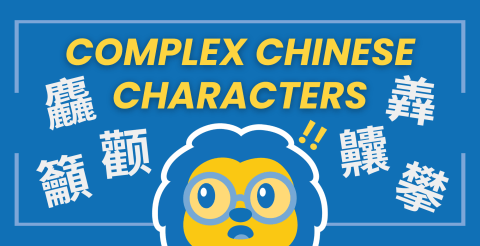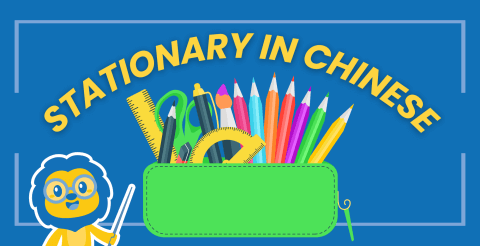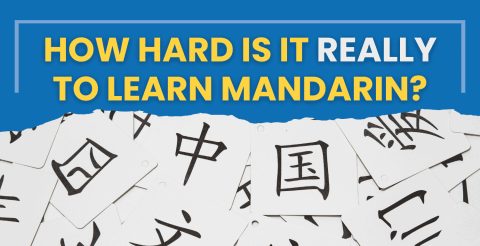Spanish and Mandarin || Discover Some Surprising Similarities

You may think Spanish and Mandarin wouldn’t have any similarities at all.
They are completely different when written and spoken – but you might be surprised!
Whilst Spanish and Chinese are two very different languages, they share some similarities in their intonation and their grammar.
We’re going to learn about some of those today as we take a look at the similarities between Spanish and Mandarin.
Similarities Between Spanish and Mandarin || Words
Similarities Between Spanish and Mandarin || Grammar
Similarities Between Spanish and Mandarin || FAQs
Spanish and Mandarin || Words
DID YOU KNOW | There are more words than you think that sound similar in Spanish and Mandarin.
Sometimes the meaning is the same but other times the meaning is completely different.
Here is a list of words that sound practically the same. We’ll talk more about some of them below.
| Spanish | Pinyin (Chinese) | Hanzi (Characters) |
|---|---|---|
| Café | kā fēi | 咖啡 |
| Alabo | ā lā bó | 阿拉伯 |
| Amén | ā mén | 阿门 |
| Pizza | bǐ sà | 比萨 |
| Bola | bō la | 拨拉 |
| Qué | qué | 瘸 |
| Mama | mā mā | 妈妈 |
| Papá | bā bā | 父父 |
| Le | le | 了 |
| Si | sì | 四 |
| Ajá | ā hā | 啊哈 |
| Bobo | bó bo | 伯伯 |
| Dá | dá | 达 |
| Manche | màn chē | 慢車 |
| Ancho | àn cháo | 暗潮 |
| Bala | bā la | 扒拉 |
| Bolillo | bō li yòu | 玻璃釉 |
| Nené | nè nè | 讷讷 |
| Cuánto | quān tào | 圈套 |
| Gala | gā la | 嘎啦 |
| Gen | gēn | 根 |
| Allá | ā yā | 啊呀 |
| Chao | shāo | 烧 |
| Masa | mā sa | 摩挲 |
| Moda | mò dà | 莫大 |
| Pie | piē | 瞥 |
Let’s take a look at some of these in more detail – because whilst some are more obvious, others are not so!
Bola and 拨拉
“Bola” in some latin American regions means cake, while in México it means ball. Already confusing right?!
In Chinese the meaning changes even more, where it means to move or adjust something with the hand.
Do you have the word Bola in your language? If so tell us what it means in the comments.
Bolillo and 玻璃釉
“Bolillo” in Mexican slang means a large bread, kind of like a baguette.
The meaning in Chinese is not quite the same! It is a glass like glaze in Mandarin.
FUN FACT | Bread in Chinese is 面包 miàn bāo

8 Interesting & Beautiful Chinese Words (That Natives Use Daily)
In this article, we reveal 8 awesome and interesting Chinese words with no accurate English translation – and why you need to know them.
Qué and 瘸
The word “Qué” is such a key component in Spanish to ask any interrogative question. If you study Spanish you’ll be sure to come across the word many times.
Whilst the word sounds similar in Chinese, its meaning is “lame” – completely different from Spanish.
Spanish and Mandarin || Grammar
Tones and Intonation
It’s not just words where you’ll see similarities between Spanish and Mandarin.
There are some curious things to note with grammar also.
Whilst Mandarin is a tonal language and Spanish is not, both languages share one accent mark in common that looks exactly the same.
it should be noted that the way they are used it in fact different though.
Here is a brief look at four of them:
- Agudas | Accent mark in words that end with n, s or vocal
- FOR EXAMPLE | Can-ción (Song)
- See how the accent on the O matches the 2nd tone in Mandarin – ó
- Graves | Accent mark if it ends with a consonant, except n or s.
- FOR EXAMPLE | Ár-bol (Tree)
- Esdrújulas | Always located in the antepenultimate syllable.
- FOR EXAMPLE | Bá-si-co (Basic)
- Sobreesdrújulas | Again, always located on the antepenultimate syllable.
- FOR EXAMPLE | Fá-cil-men-te (Easily)
In Chinese of course we have four tones in total, plus a 5th neutral one.
Let’s take a look at them:
- 1st tone ā. The most musical tone with the highest pitch
- 2nd tone á. Almost sounds as if you were confused, as your pitch slowly rises.
- 3rd tone ǎ. Down and immediately back up.
- 4th tone à. Sounds as if you were angry. The most abrupt tone.
- 5th tone a. Neutral with no change in intonation.
BONUS CONTENT | Find out more about the tones in Chinese here.
Here is a useful extract from that very article…
Keep in mind that no matter which language you speak, you use tones in your daily life. For example, in English, a person can say the word “mum” in many tones.
If you’re excited to see your mom, you might exclaim in a high, excited voice, “Mum!”
If you’re looking for your mom, you might call out, “Mum?” in a rising, questioning tone.
If a mum asked her child to clean their room when they didn’t want to, the child might say, “But, mum!” in a long, drawn-out, whiny tone.
If your mum said something that offended you, you might yell out in surprise, “Mum!” with a shocked, falling tone of disapproval.
So whether you speak Spanish, Mandarin or English – you use tones more than you thing!
Chinese is a curious language for beginners, because a word that reads the same with pinyin, can actually mean something completely different.
- mā means mum or mother
- má means hemp
- mǎ means horse
- mà means to scold or curse
The Ü
Both Spanish and Mandarin also share the infamous ü.
In Spanish, the ü is an orthographic sign that must always be pronounced. The situation is the same in Mandarin too.
For example:
- Pingüino which means Penguin in Spanish
- 旅行 (lǚ xíng) which means to travel in Mandarin
Note how both include the ü (in Mandarin with the additional of the tonal mark also).
Both are used in the same way.
So we can see, despite clear and obvious differences between the two, both languages share some interesting traits.
What languages do you speak and do you ever notice any similarities between the two?
You’d be surprised how often they occur! Tell us below.
Spanish and Mandarin || FAQs
How do you say four in Chinese?
Sì, but in Spanish, the same word means yes.
Do both Spanish and Chinese have the ü?
Both Spanish and Mandarin also share the infamous ü.
In Spanish, the ü is an orthographic sign that must always be pronounced. The situation is the same in Mandarin too.
For example:
Pingüino which means Penguin in Spanish
旅行 (lǚ xíng) which means to travel in Mandarin
How many tonic syllables are in Spanish and how many tones in Chinese?
We find four tonic syllables in Spanish and five tones in Chinese (although it’s widely regarded there are four in Mandarin with the fifth remaining neutral).
Where the two meet is in the “agudas” (the second tone in Mandarin).
Are Chinese and Spanish completely different?
In reality yes they are completely different.
However, they share some similarities that includes similar words and also regarding accent marks.
Want more from LTL?
If you wish to hear more from LTL Mandarin School why not join our mailing list.
We give plenty of handy information on learning Chinese, useful apps to learn the language and everything going on at our LTL schools!
Sign up below and become part of our ever growing community!
⭐ Download our free ebook, your starter pack of essential Mandarin learning resources!


 Hi, my name is Ilaria. I am from Italy and I am a Student Advisor at LTL. Fancy coming to study with us in China? Drop me a message.
Hi, my name is Ilaria. I am from Italy and I am a Student Advisor at LTL. Fancy coming to study with us in China? Drop me a message. Hi, my name is Mojca. I am from Slovenia in Europe and I work as a student advisor at our Shanghai school.
Hi, my name is Mojca. I am from Slovenia in Europe and I work as a student advisor at our Shanghai school.






